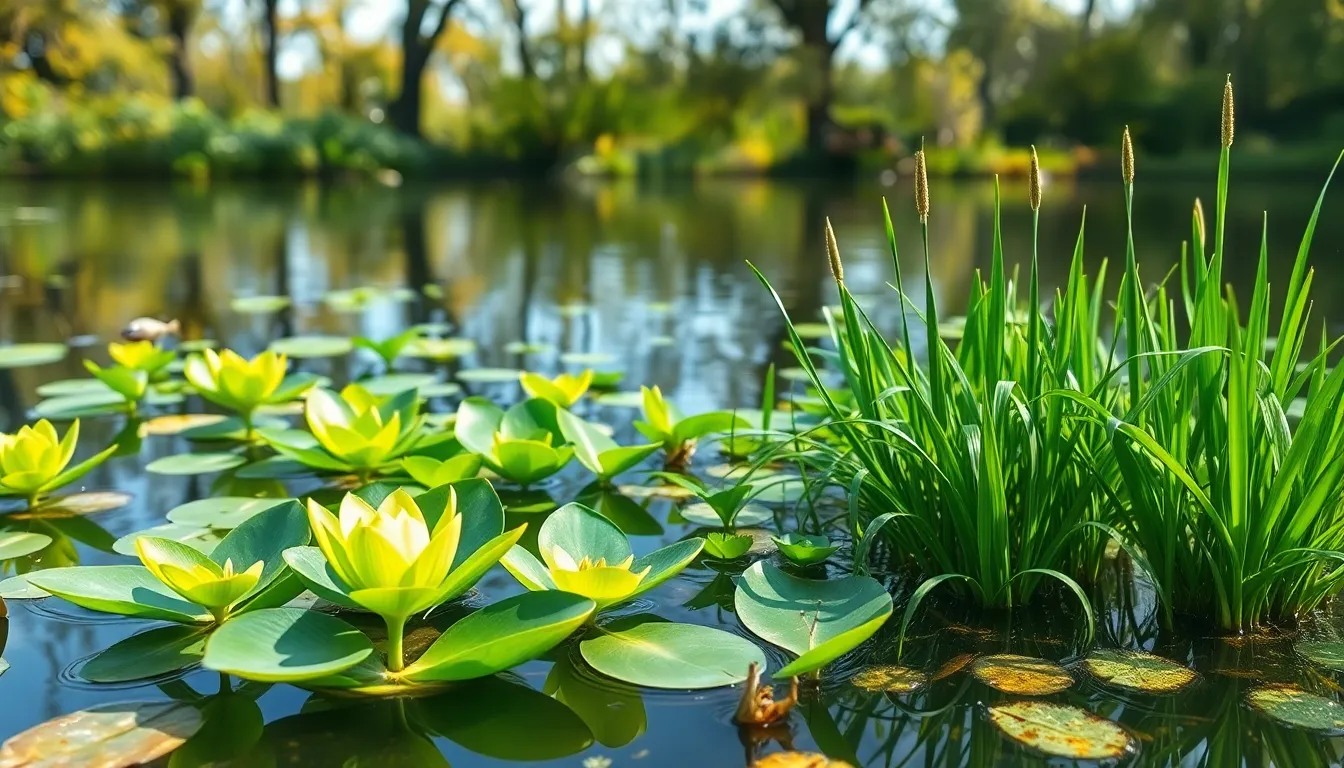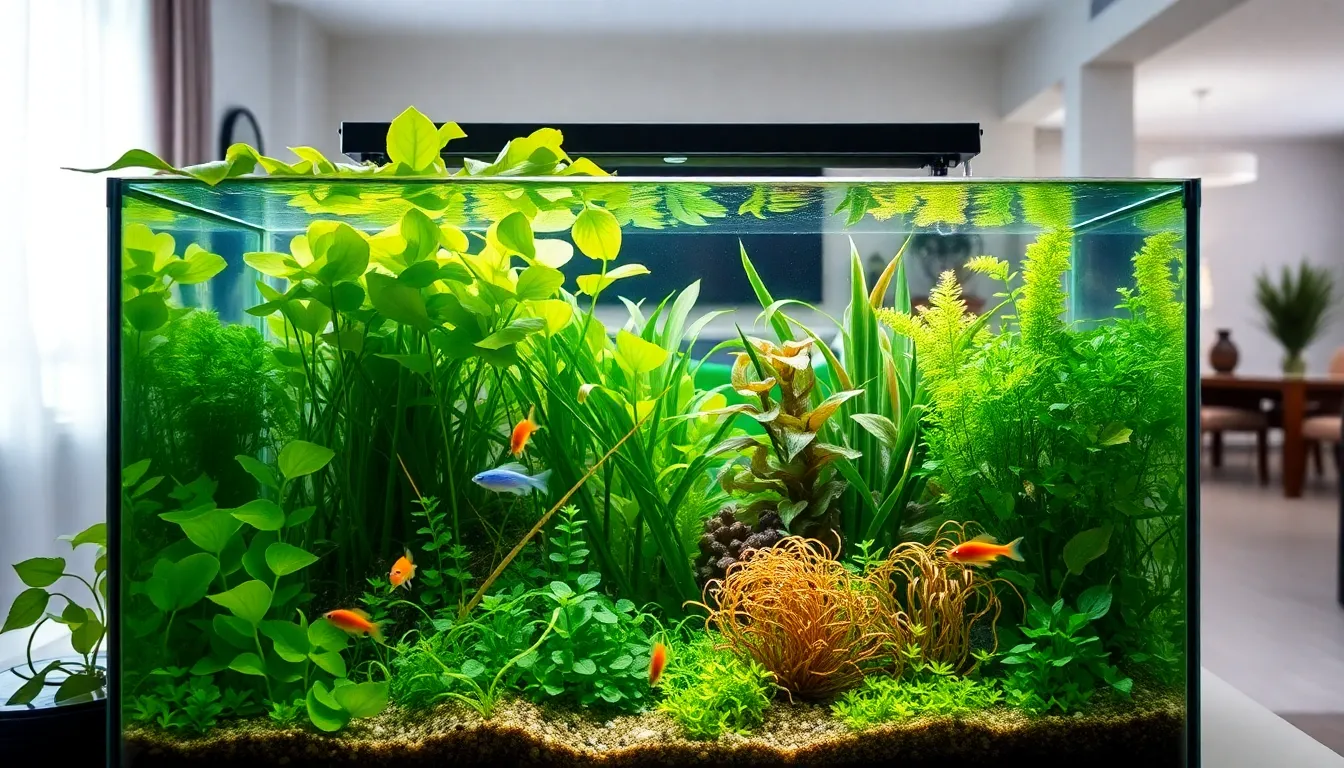Have you ever stared into the depths of your pond or aquarium and thought it looked a bit, well, bare? Adding easy aquatic plants could be just the splash of life it needs. Not only do these plants boost aesthetics, they can also create a healthier environment for fish and other aquatic creatures. Plus, they require minimal effort to maintain, which is perfect for both novices and seasoned enthusiasts alike. So, let’s jump into the world of easy aquatic plants and see what makes them such a fantastic choice.
Easy Aquatic Plants

Aquatic plants play a pivotal role in enhancing the ecosystem within water bodies. First and foremost, they provide natural filtration. This means that as plants absorb nutrients and carbon dioxide, they help maintain water clarity and health. Also, they can also reduce algae growth, which is often the bane of any pond owner’s existence.
Also, these plants offer shelter for fish and other aquatic animals, creating a sanctuary for them to hide from predators. Who wouldn’t want to live in a lush, green abode? Finally, easy aquatic plants improve oxygen levels within the water, crucial for sustaining life. Simply put, incorporating these plants into an aquatic environment is not just beneficial: it is essential for harmony and balance.
Types Of Easy Aquatic Plants
The beauty of aquatic plants lies in their diversity. Here’s a breakdown of some of the most popular types that anyone can incorporate into their water spaces:
1. Floating Plants
Floating plants are perhaps the easiest to care for because they don’t require planting in substrate. Duckweed and water hyacinth are two common choices that sit on the water’s surface, creating vibrant green carpets. They provide shade, thereby reducing water temperature, and offer some protection for fish and frogs from predators.
2. Submerged Plants
These plants grow underwater and are essential for increasing oxygen levels while also serving as a hiding spot for fish. Anacharis and hornwort are perfect examples. They not only look fantastic swaying with the water’s current, but they also help filter out impurities from the water.
3. Emergent Plants
Emergent plants stand proudly above the water level, with their roots submerged. Cattails and bulrushes are iconic examples. They contribute to the ecosystem by providing habitat for birds and insects while also stabilizing shorelines to prevent erosion. Choosing a mix of these three types can create a well-balanced aquatic environment.
Choosing The Right Aquatic Plants For Your Environment
Selecting the right aquatic plants requires consideration of several factors. Accessibility to sunlight is paramount. Most aquatic plants thrive in bright environments but some can tolerate shade. Assessing the depth of your water body is also crucial: different plants prefer varying depths.
Next, consider the water quality. Certain species prefer soft, acidic water, while others thrive in hard alkaline conditions. Listing out your specific environmental conditions will help narrow your choices. Finally, compatibility is key. Some plants might compete for resources, leading to an unbalanced ecosystem: this means combining species that complement rather than hinder each other is essential.
Care And Maintenance Tips
Once the aquatic plants are set, maintaining their health becomes a priority. Regular monitoring of the water quality is essential, along with ensuring that light reaches all areas where plants are situated. Trimming back overgrown plants will promote new growth and prevent any one plant from overtaking others.
Also, fertilization can be beneficial but should be done cautiously. Under-fertilizing can stunt growth while over-fertilizing can lead to algae blooms, which can cause more issues. Finally, it’s important to watch for any pests or diseases: early detection often makes treatment far easier.
Common Mistakes To Avoid When Planting Aquatic Plants
While adding aquatic plants may seem straightforward, common pitfalls can lead to frustration. One frequent mistake is choosing the wrong plants for the environment. Researching compatible species beforehand can save a lot of hassle down the line.
Another issue arises from inadequate planting depth. Plants need the right depth to ensure their roots can anchor while still being able to access light. Overcrowding is yet another concern: cramming too many plants into a space can stifle their growth and lead to competition for nutrients.
Finally, neglecting to remove dead leaves and debris can result in polluted water, undermining all the benefits these plants provide. With a bit of awareness and care, these common mistakes can easily be avoided.

